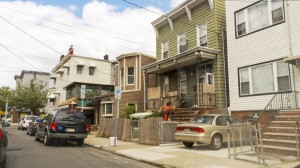The Times’ Sunday editorial was a ringing endorsement of affirmatively furthering fair housing as put into practice in Mount Laurel, N.J. Mount Laurel, of course, was the epicenter of a fair housing lawsuit that resulted in state supreme court rulings in 1975 and 1983 known as the Mount Laurel Doctrine.
Essentially, the doctrine held that every town must make room for people of all incomes and can’t legitimately exclude low or moderate income people through restricting planning and zoning policies. The Fair Share Housing Center, a primary litigant in the case that led to the Ethel Lawrence Homes in Mount Laurel that’s lauded by the editorial, calls it “one of the most significant civil rights cases in the United States since Brown v. Board of Education (1954).”
That statement might sound self-serving, but it has some credence, given that other states all over the country – including Vermont – have at least paid lip service to this principle. (For a quick summary of the Doctrine and how it resonates in Vermont, check out our previous blog post on this.
One thing that was missing from the editorial was any invocation of the incisive language in the New Jersey justices’ rulings. Like this, from Mount Laurel I:
“By way of summary, what we have said comes down to this. As a developing municipality, Mount Laurel must, by its land use regulations, make realistically possible the opportunity for an appropriate variety and choice of housing for all categories of people who may desire to live there, of course including those of low and moderate income. It must permit multi-family housing, without bedroom or similar restrictions, as well as small dwellings on very small lots, low cost housing of other types and, in general, high density zoning, without artificial and unjustifiable minimum requirements as to lot size, building size and the like, to meet the full panoply of these needs. Certainly when a municipality zones for industry and commerce for local tax benefit purposes, it without question must zone to permit adequate housing within the means of the employees involved in such uses…” (emphasis added)
Those guidelines are as apt today as when that opinion was written, in 1975 – 40 years ago!
Another thing missing from the editorial was anything more than a passing reference to complexities and controversies that attended efforts to implement the doctrine in municipalities across the state. It’s a long and tangled story, and while it’s true as the Times intones that “some local officials are working diligently to turn back the clock…” and that “Gov. Chris Christie and his allies in some of the state’s wealthy towns would like nothing more than to kill this remedy…” there is an added complication in many communities, and this one has resonance in Vermont, too.
Some of the challenges New Jersey’ Sussex County faces in providing more affordable housing, according to this New Jersey Herald account, may sound familiar here:
“ ….a shortfall of utilities — sewer, water, electric — to accommodate more housing and population; and a lack of practical public transportation in the area that limits the ability for low- and moderate-income people to get to decent-paying jobs.
“But the most glaring problem is that with the population declining and the economy volatile, the county is not an ideal place for developers to invest.”




